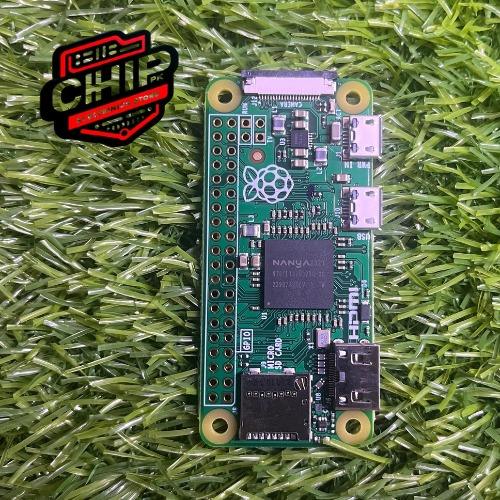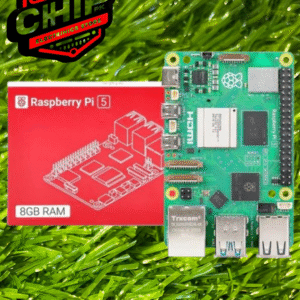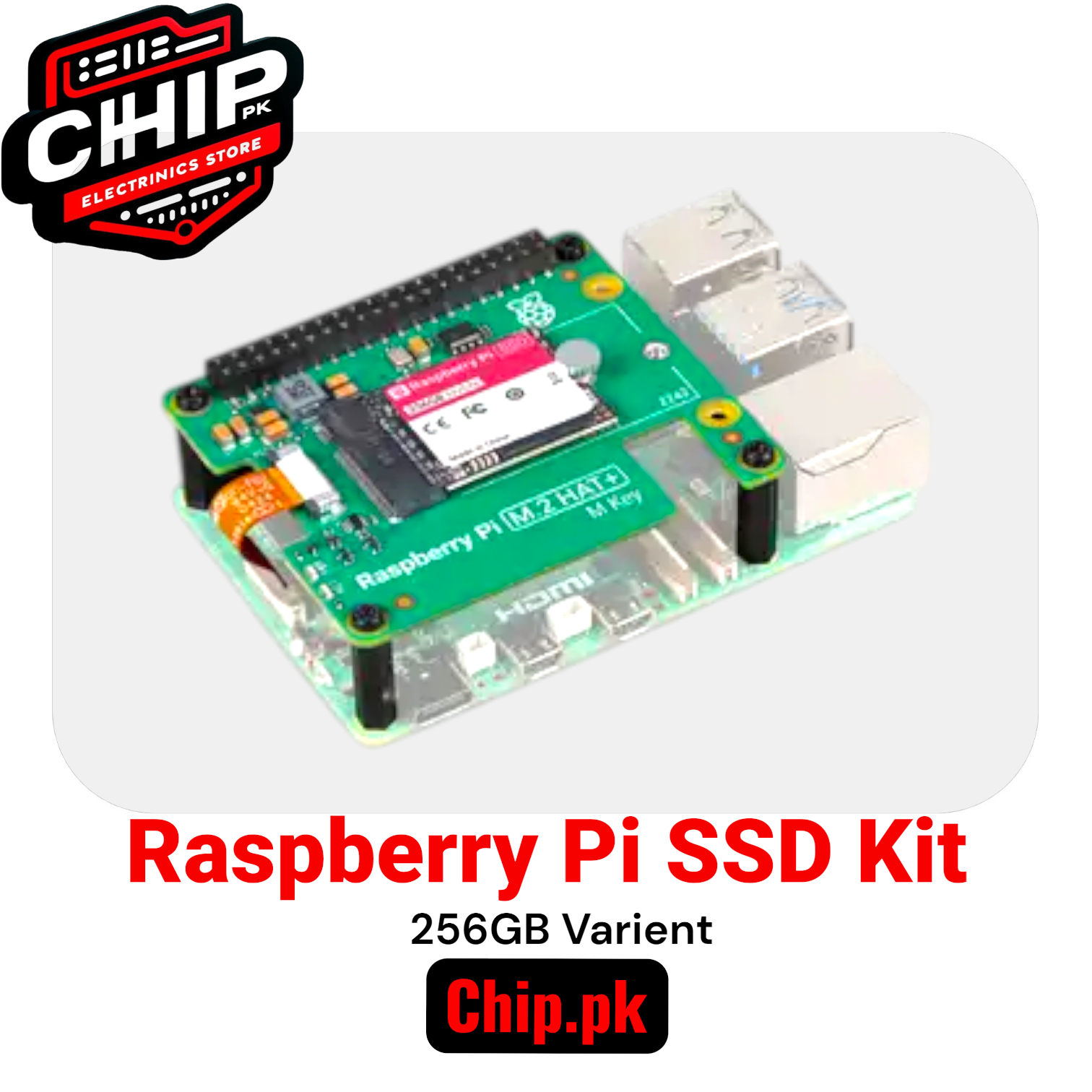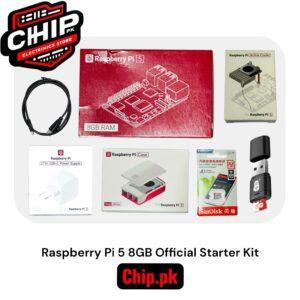Description
Raspberry Pi Zero 2W Price in Pakistan | Raspberry Pi Board
A Raspberry Pi is a small, affordable single-board computer that was originally designed for teaching computer science and programming, but has since become popular for a wide variety of DIY projects. It’s about the size of a credit card and comes with various components such as a processor, memory, and ports for USB, HDMI, and networking.Chip.pk give best Raspberry Pi Zero 2W Price in Pakistan.
 Key Features:
Key Features:
- Size & Portability: It’s really small—about the size of a credit card—but surprisingly powerful for its size. This makes it great for portable, low-cost computing projects where space is limited.
- Affordable: The base models are super cheap, usually around $5–$35 depending on the version. Even the more powerful models (like the Raspberry Pi 4) are under $100, which makes it a great choice for anyone on a budget.
- Hardware:
- CPU: ARM-based processors, which are energy-efficient but still capable of handling basic computing tasks.
- RAM: Different models come with different amounts of RAM (ranging from 1GB to 8GB on newer versions).
- Ports: HDMI output for connecting to monitors or TVs, USB ports for peripherals (keyboard, mouse, etc.), and GPIO pins (General Purpose Input/Output) for interfacing with physical hardware like sensors, motors, or lights.
- Storage: Instead of a hard drive, Raspberry Pi uses a microSD card for storage, which you load with the operating system (OS). This can also be a bit of a limitation when it comes to performance and space, but you can use external drives or network storage to expand it.
- Connectivity:
- Wi-Fi & Bluetooth: Many versions come with built-in Wi-Fi and Bluetooth, so you can easily connect to networks, devices, or peripherals without needing extra accessories.
- Ethernet: Higher-speed internet connection (especially useful for things like web servers or IoT projects).
- Operating System: The main OS used for Raspberry Pi is Raspberry Pi OS, a Linux-based system. It’s pretty lightweight, which makes it a good match for the Pi’s limited resources. You can also run other OSes, like Ubuntu, or even experiment with specialized versions like RetroPie for gaming.
Popular Uses for Raspberry Pi:
- Learning to Code: Since Raspberry Pi comes with Python pre-installed, it’s a great platform for learning programming.
- Media Centers: Using software like Kodi or Plex, you can turn your Raspberry Pi into a full-fledged media center for streaming music, movies, or TV shows.
- Retro Gaming: Many people use Raspberry Pi for retro gaming emulation, running classic consoles like NES, SNES, Sega Genesis, and more.
- Home Automation: You can use Raspberry Pi as the brain for a smart home system. It can control lights, thermostats, security cameras, and more.
- IoT Projects: Raspberry Pi is often used in Internet of Things (IoT) projects, where sensors, cameras, or other devices are connected to the Pi for data collection, processing, or remote control.
- Robotics: Thanks to its GPIO pins, Raspberry Pi can interact with motors, sensors, and other robotics components, making it a great platform for building custom robots.
- Web Servers: With enough processing power, a Raspberry Pi can function as a personal web server or a development server.
- AI & Machine Learning: While not as powerful as high-end computers, Raspberry Pi can still be used for lightweight AI and machine learning experiments, especially when paired with accessories like the Google AIY Voice Kit or coral USB Accelerator for edge computing.
Raspberry Pi Models:
- Raspberry Pi 4: The most powerful model, available with 2GB, 4GB, or 8GB RAM. Great for tasks like media streaming, web hosting, and light desktop computing.
- Raspberry Pi 3: Older than the Pi 4 but still quite capable. It has built-in Wi-Fi and Bluetooth, and it’s great for most beginner projects.
- Raspberry Pi Zero 2W: A very small, ultra-low-cost version of the Pi. It has fewer ports and less power, but it’s perfect for small, low-power projects like portable devices or simple IoT applications.
- Raspberry Pi Pico: A microcontroller rather than a full computer, ideal for electronics projects. It’s based on the RP2040 chip, and it’s designed for controlling hardware like LEDs, motors, and sensors.
Raspberry Pi Zero 2W:-
The Raspberry Pi Zero 2 W is a more recent addition to the Raspberry Pi family, released in October 2021. It’s an upgrade to the original Raspberry Pi Zero and Zero W, and it brings a lot of improvements in terms of processing power while maintaining the same tiny size and low price. It’s perfect for compact, low-power projects where you still need decent performance.
Key Features of the Raspberry Pi Zero 2W:
- Processor:
- The Zero 2 W is powered by the Broadcom BCM2710A1 SoC (System on Chip), which is a quad-core ARM Cortex-A53 processor running at 1 GHz.
- This is a huge upgrade from the original Zero, which had a single-core processor. With the quad-core CPU, it provides significantly better performance, making it capable of handling more complex tasks.
- RAM:
- It comes with 512MB of LPDDR2 SDRAM, which is enough for many lightweight tasks, but still more limited compared to models like the Raspberry Pi 4.
- Size:
- Size: Like the original Raspberry Pi Zero, the Zero 2 W is super compact at 65mm x 30mm x 5mm, about the size of a stick of gum.
- This makes it ideal for projects with limited space, like wearables, drones, or small robots.
- Wireless Connectivity:
- Wi-Fi: Built-in 2.4 GHz Wi-Fi (802.11n).
- Bluetooth: Built-in Bluetooth 4.2 support (you can connect Bluetooth peripherals like keyboards, mice, or speakers).
- Ports:
- Mini HDMI: For connecting it to a display.
- USB OTG: One micro USB port for power and one for connecting peripherals like a keyboard or mouse (you’ll likely need a USB OTG adapter to connect regular USB devices).
- GPIO: 40-pin header (unpopulated), which allows you to connect it to sensors, motors, or other electronic components.
- CSI Camera Connector: For connecting a camera module (you can attach the Raspberry Pi Camera Module or other compatible cameras).
- Audio: Via HDMI or an external audio solution through the GPIO header.
- Storage:
- Like other Raspberry Pi models, the Zero 2 W uses a microSD card (at least 8GB recommended) to store the operating system and data.
- You’ll need to flash an OS like Raspberry Pi OS onto the SD card to boot the device.
- Power Consumption:
- It’s low-power, with a typical power draw of around 0.7W (but this can vary depending on usage). It’s very energy-efficient, making it ideal for battery-powered or low-power devices.
- Backward Compatibility:
- It’s compatible with most accessories and add-ons made for the original Raspberry Pi Zero and Zero W. So, if you have any existing accessories, you can use them with the Zero 2 W, though you might need a few adapters (like mini HDMI to HDMI or micro USB OTG adapters).
Ideal Uses for Raspberry Pi Zero 2W:
- Portable Projects:
- Wearables or portable devices that need small, lightweight, and power-efficient computing, like smart glasses, handheld devices, or custom controllers.
- Robotics:
- Its small size and decent processing power make it a great choice for building robots or drones, where size and weight are important factors.
- IoT Projects:
- Perfect for low-power IoT devices, like sensors, cameras, or home automation systems. You could make a smart thermostat, security camera, weather station, or even a remote-controlled system.
- Retro Gaming Consoles:
- With its increased processing power compared to the original Zero, the Zero 2 W is better suited for retro gaming emulators.
- Media Streaming:
- While it might not be as powerful as the Raspberry Pi 4, it’s still capable of streaming media, making it a decent option for lightweight streaming devices, DIY media centers, or home automation dashboards.
- DIY Projects:
- Its small size is ideal for integrating into custom electronics projects, whether you’re building a gadget, custom controller, or an embedded system.
- Networking Devices:
- You could use it for networking-related projects, like a small personal VPN server, a Pi-Hole ad blocker, or a network monitor.
How to Get Started:
To start using the Raspberry Pi Zero 2W, you’ll need:
- MicroSD Card (8GB or more).
- Power Supply (5V, 2A recommended).
- Mini HDMI to HDMI adapter (for connecting to a monitor).
- Micro USB OTG adapter (if you want to connect USB peripherals like a keyboard or mouse).
- Keyboard/Mouse (for initial setup).
- Raspberry Pi Camera Module (optional, for projects that require a camera).
You’ll then download Raspberry Pi OS (or another compatible OS) from the official Raspberry Pi website and flash it to the microSD card. After that, just plug everything in, and you’re good to go!
Overall, the Raspberry Pi Zero 2W is an excellent balance of performance, size, and price, making it a fantastic choice for a wide range of projects, especially when you need something compact and power-efficient.Buy Best Raspberry Pi Zero 2W Price from Chip.pk!
Customer Support:-
- Available 24/7
- Phn # 03091416242
- Mail # Cpakstore@gmail.com
Package Include:-
- 1 X Raspberry Pi Zero 2W
Social Media:-










Reviews
There are no reviews yet.